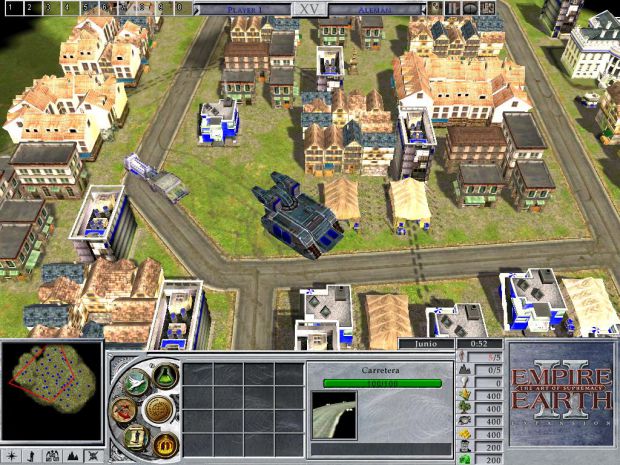


Empire Earth II was developed by Mad Doc Software and published by Vivendi, since Stainless Steel Studios left the project to develop Empires: Dawn of the Modern World.
 Empire Earth II was released in 2005, two years after Empires: Dawn of the Modern World. Empires: Dawn of the Modern World was much more condensed, with only 1,000 years and only nine civilizations. Empires: Dawn of the Modern World was not technically the sequel to Empire Earth, but it was released in 2003 and sometimes called the Spiritual Sequel to Empire Earth. The expansion pack was released in 2002, after the release of Empire Earth but before the release of Empires: Dawn of the Modern World. The expansion pack added several new campaigns and features to the game, but there were many small bugs that were never addressed by Mad Doc Software. Released in 2002, Empire Earth: The Art of Conquest was an expansion pack for the first Empire Earth.
Empire Earth II was released in 2005, two years after Empires: Dawn of the Modern World. Empires: Dawn of the Modern World was much more condensed, with only 1,000 years and only nine civilizations. Empires: Dawn of the Modern World was not technically the sequel to Empire Earth, but it was released in 2003 and sometimes called the Spiritual Sequel to Empire Earth. The expansion pack was released in 2002, after the release of Empire Earth but before the release of Empires: Dawn of the Modern World. The expansion pack added several new campaigns and features to the game, but there were many small bugs that were never addressed by Mad Doc Software. Released in 2002, Empire Earth: The Art of Conquest was an expansion pack for the first Empire Earth. 
The game also included 21 nations, from every age and location. The game had 14 epochs in it, which totaled 500,000 years. The 2 million unit sales were enough to spawn an expansion pack and several sequels to the game. The game was praised for its in-depth gameplay, and received positive critical acclaim. It was developed by Stainless Steel Studios, and published by Sierra Entertainment.
The first game of the series, Empire Earth, was released in 2001. The games use the Titan and Titan 2.0 engine, which was sold after Stainless Steel Studios closed. Rick Goodman, who designed Empire Earth and Empires: Dawn of the Modern World, was one of the lead designers of Age of Empires. The games in the series are historical RTS games that are similar to Age of Empires. The Empire Earth series is a franchise of real-time strategy computer games developed by Stainless Steel Studios and Mad Doc Software, and published by Sierra Entertainment, Activision, and Vivendi.








 0 kommentar(er)
0 kommentar(er)
